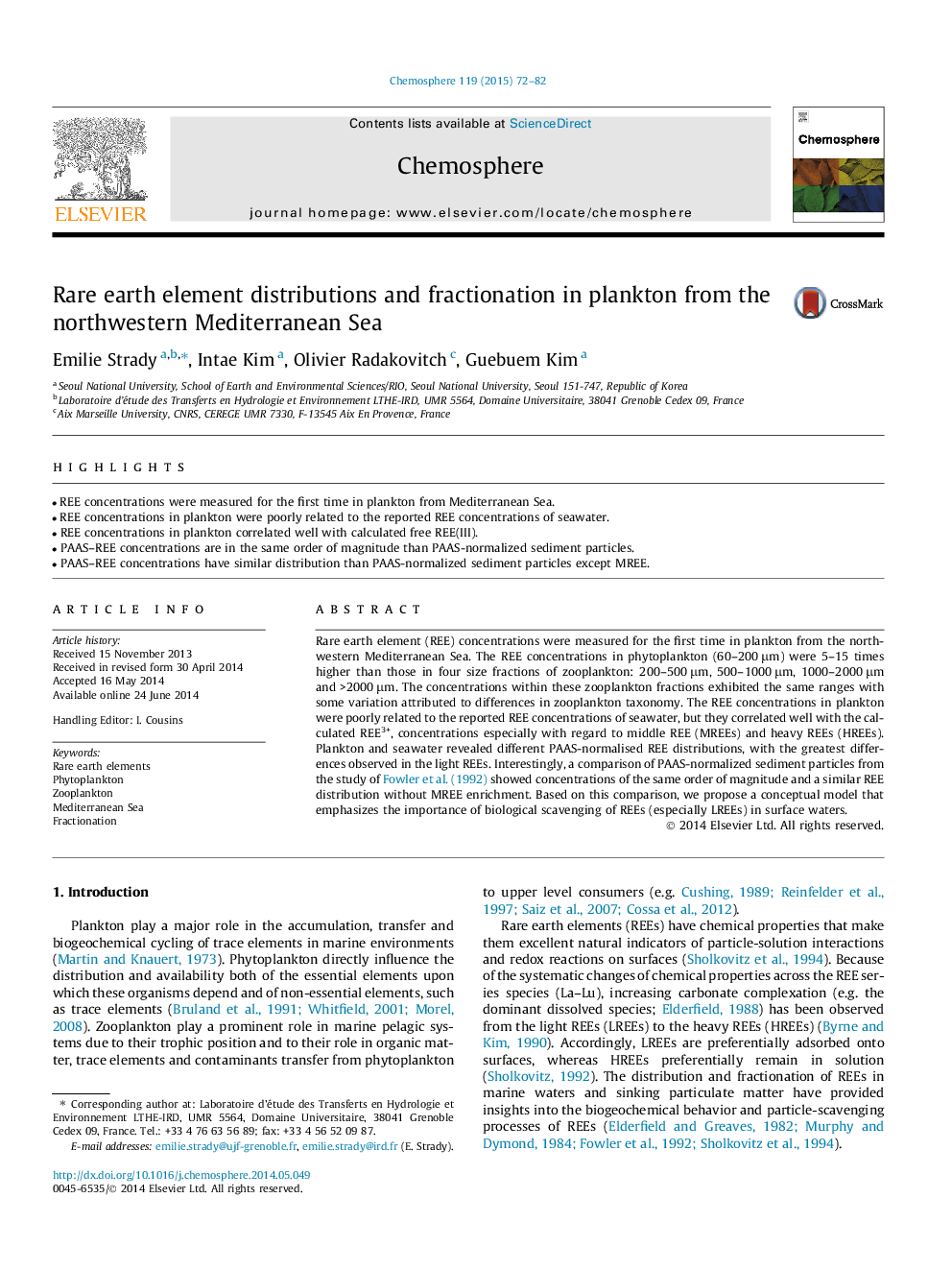| Article ID | Journal | Published Year | Pages | File Type |
|---|---|---|---|---|
| 4408605 | Chemosphere | 2015 | 11 Pages |
•REE concentrations were measured for the first time in plankton from Mediterranean Sea.•REE concentrations in plankton were poorly related to the reported REE concentrations of seawater.•REE concentrations in plankton correlated well with calculated free REE(III).•PAAS–REE concentrations are in the same order of magnitude than PAAS-normalized sediment particles.•PAAS–REE concentrations have similar distribution than PAAS-normalized sediment particles except MREE.
Rare earth element (REE) concentrations were measured for the first time in plankton from the northwestern Mediterranean Sea. The REE concentrations in phytoplankton (60–200 μm) were 5–15 times higher than those in four size fractions of zooplankton: 200–500 μm, 500–1000 μm, 1000–2000 μm and >2000 μm. The concentrations within these zooplankton fractions exhibited the same ranges with some variation attributed to differences in zooplankton taxonomy. The REE concentrations in plankton were poorly related to the reported REE concentrations of seawater, but they correlated well with the calculated REE3+, concentrations especially with regard to middle REE (MREEs) and heavy REEs (HREEs). Plankton and seawater revealed different PAAS-normalised REE distributions, with the greatest differences observed in the light REEs. Interestingly, a comparison of PAAS-normalized sediment particles from the study of Fowler et al. (1992) showed concentrations of the same order of magnitude and a similar REE distribution without MREE enrichment. Based on this comparison, we propose a conceptual model that emphasizes the importance of biological scavenging of REEs (especially LREEs) in surface waters.
